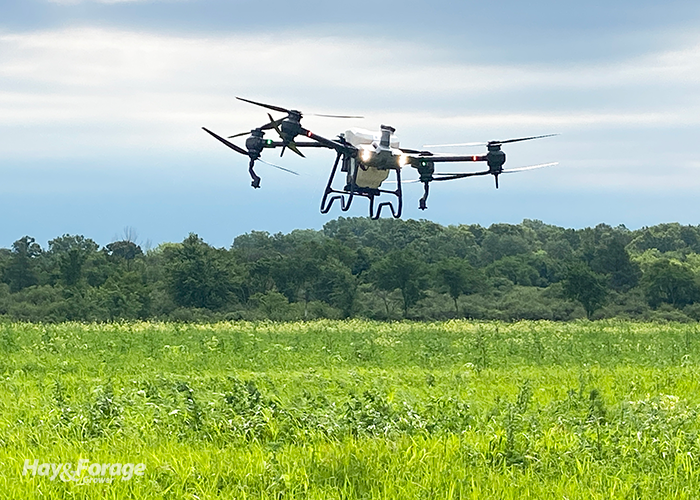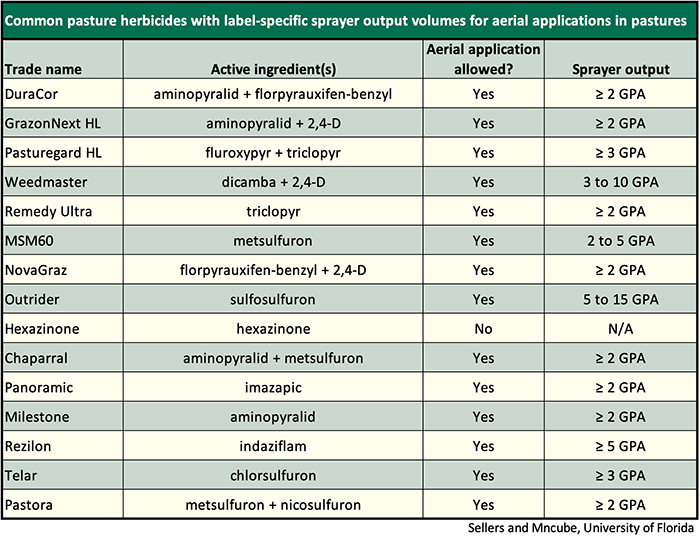
The thought of using an unmanned aerial vehicle (UAV or drone) for pest control was all but a Jetsons-like dream not that many years ago. These days, that dream is more than reality; it’s becoming commonplace.
Drone-flying agricultural businesses have popped up all over the U.S. and now spray many thousands of acres of cropland to control weeds, diseases, or insects. Pasture and rangeland haven’t been left behind. In fact, a drone’s utility as an application mechanism is highly suited for grazing land because many areas aren’t accessible with ground application units. Also, many ground application services don’t want to spray pastures during the row-crop spraying season (or ever).
Recently, researchers Brent Sellers and Tenzy Mncube from the University of Florida’s Range Cattle Research and Education Center in Ona reported on their work evaluating the effectiveness of weed control using a drone compared to a ground application rig.
In July 2024, they set up their experiment to compare ground applications of DuraCor + Pasturegard HL (16 ounces per acre [oz/ac] + 16 oz/ac) or GrazonNext HL + Pasturegard HL (24 oz/ac + 16 oz/ac) at sprayer outputs of 10, 20, or 30 gallons per acre (GPA) with drone applications of these same herbicides and rates at an output of 2.5 GPA. The primary weed in the pasture was dogfennel at an average height of 36 inches. Note that drone applications require a much lower volume of water.
“Analyzing the data from this trial was easy,” Sellers and Mncube note. “We saw no visible differences between the ground and the aerial application at one and two months after treatment. We also put the drone application to the test on an abandoned citrus grove with dogfennel exceeding 7 feet in height, and they were controlled using these herbicide mixes,” they add.
This preliminary research, along with other such trials, indicates that drones are an effective option for applying herbicides to pastures. The researchers plan to do further studies this summer. They may also start looking at reduced herbicide rates to help control costs. Currently, drone applications are at least $5 per acre more than traditional ground applications.
Follow the rules
Sellers and Mncube emphasize the importance of knowing the legalities of spraying with a UAV. They note that most herbicides utilized for pasture or hayfield weed control can be applied aerially (see table below). The exception is herbicides containing hexazinone (for example, Velpar).
In many cases, applications need to be made no more than 10 feet above the crop canopy to minimize spray drift, according to the researchers. Rules will vary somewhat with each product, so take time to read the label and discuss an application plan with your drone pilot.


